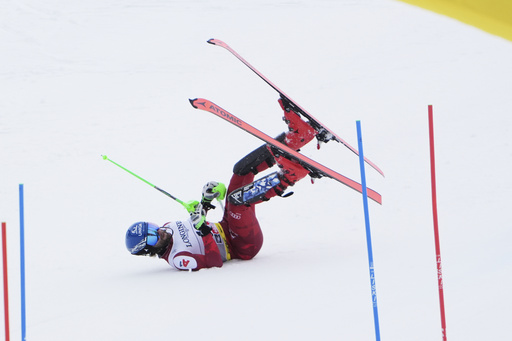
SAALBACH-HINTERGLEMM, Austria — At the age of 40, Italian skier Christof Innerhofer has seen the evolution of the combined skiing event throughout his lengthy career. In the early days, the format required athletes to participate in a demanding three-run race, incorporating one downhill run followed by two slalom runs. This approach was eventually phased out nearly 15 years ago due to its tendency to favor slalom specialists, as well as its time-consuming nature. The last Olympic competition of this format took place in Turin 2006, where Ted Ligety claimed the gold under the illuminated sky.
The combined event then transitioned to a super-combined format, featuring a single downhill run alongside one slalom run. This version was famously won by Bode Miller at the 2010 Vancouver Olympics but faced challenges as fewer athletes excelled in both skiing disciplines. Presently, a new format termed the team combined has emerged, debuting at this week’s world championships and set to be featured in the upcoming Milan-Cortina Olympics next year. In this innovative format, each team consists of one skier tackling a downhill run and another handling a slalom run, with their accumulated times determining the final standings.
In the women’s race, Breezy Johnson and Mikaela Shiffrin clinched the gold medal on Tuesday, while Franjo von Allmen and Loic Meillard led a clean sweep for the Swiss team in the men’s event on Wednesday. Innerhofer expressed his approval of the recent changes: “I like it. It was right to change the format. People like it. You win and lose together now with this kind of team.” The camaraderie from the event was palpable as Johnson rushed to embrace Shiffrin after her run, a scene mirrored by the celebrating Swiss men’s team, who shared an emotional group hug.
The combined event holds historical significance, being the first Alpine skiing event included in the Olympics, introduced in the 1936 Games in Garmisch-Partenkirchen, Germany. Innerhofer, who achieved a silver in the super-combined at the 2011 World Championships and a bronze in the same format during the 2014 Sochi Olympics, acknowledges the appeal of the new team component but contends that the medals carry “much less” value now. He elaborated, saying, “I did it all alone. Now it looks a little bit like a school race where you say, ‘Hey, you go by downhill, you by slalom.’”
Although he admires the blend of top slalom and downhill racers, Innerhofer maintains that these new medals will not hold the same significance. Swiss skier Lara Gut-Behrami, who participates in every skiing event except slalom, supports the latest format. She noted, “In the old event, you only had three or four athletes to watch. It’s not a good product to sell. Today was a really good product to sell on television. So if combined has a future, I think it’s this one.”
Each nation can propose up to four teams for the event; however, countries with standout athletes lacking an equal counterpart in the other discipline—such as Lucas Pinheiro Braathen from Brazil and Esther Ledecka from the Czech Republic—are excluded from participating. Marco Schwarz, an Austrian athlete with multiple medals in super-combined, stated that he prefers the traditional format despite enjoying the competition with Stefan Babinsky. Italian downhill skier Bryce Bennett added, “Combined got to a point where there’s no way you can be competitive in slalom. So now someone else is competitive for you in the slalom. I think it’s a super-cool event.”

